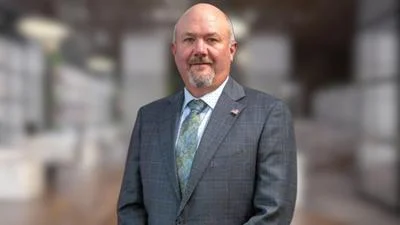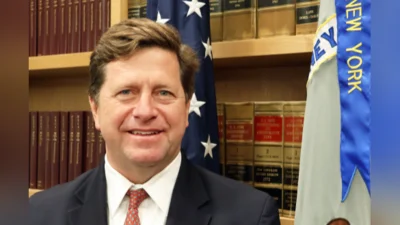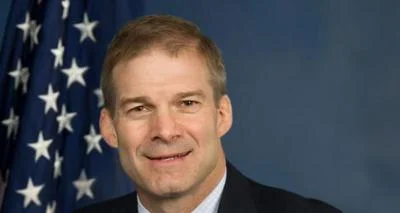The Congressional Record is a unique source of public documentation. It started in 1873, documenting nearly all the major and minor policies being discussed and debated.
“HIGHWAY TRUST FUND AND THE GAS TAX” mentioning the U.S. Dept. of Transportation was published in the Senate section on pages S1795-S1796 on Feb. 28, 1997.
The publication is reproduced in full below:
HIGHWAY TRUST FUND AND THE GAS TAX
Mr. BYRD. Mr. President, back on June 5, 1996, I sent a letter to all Senators signaling my intention to offer an amendment to the next available tax bill to place into the Highway Trust Fund the 4.3 cent gas tax that is currently used for deficit reduction.
Senators will recall that, back in May and June of last year, there was much debate on this 4.3 cent gas tax, which was first imposed by the Omnibus Budget Reconciliation Act of 1993. During this past summer, I deferred offering this amendment on two occasions at the request of both the Majority and Minority Leaders. Unfortunately, another opportunity to offer the amendment did not arise.
My purpose in proposing that the 4.3 cent gas tax be placed into the Highway Trust Fund is to better enable the Congress to reverse the very destructive trend of federal disinvestment in our nation's transportation infrastructure. By increasing the revenue stream to the Highway Trust Fund, it would be my hope and expectation to leverage additional resources for our Federal-Aid Highway program in order to stem the deterioration of our nation's highways.
Our federal investment in infrastructure as a percentage of the total federal budget has declined significantly since 1980. Few economists would disagree that adequate long term investment in infrastructure is critical to a nation's economic well-being. Only through investment here at home, investment to maintain and renew our own physical plant, can our economy grow and generate healthy wages for its citizens.
Even so, our nation's investment in infrastructure as a percentage of our Gross Domestic Product has almost been cut in half since 1980. As a nation, we continue to invest an absolutely paltry percentage of our Gross Domestic Product in infrastructure--a percentage considerably less than our chief economic competitors in Europe and Asia.
Nowhere do we pay a greater price for inadequate infrastructure investment than in our nation's highways. Our national highway system carries nearly 80 percent of U.S. interstate commerce and nearly 80 percent of intercity passenger and tourist traffic. The construction of our national interstate system represents perhaps the greatest public works achievement of the modern era. However, we have allowed segments our National Highway System to fall into serious disrepair.
The Department of Transportation has released its most recent report on the condition of the nation's highways. Its findings are even more disturbing than earlier reports. DOT currently classifies less than half of the mileage on our interstate system as being in good condition and only 39 percent of our entire national highway system is rated in good condition. Fully 61 percent of our nation's highways are rated in either fair or poor condition. Almost one in four of our nation's highways' bridges are now categorized as either structurally deficient or functionally obsolete. This is not the highway infrastructure that will help our country and its citizens continue to prosper into the twenty first century. If we allow this decay to continue, it will constrict the lifelines of our nation.
According to the DOT, our investment in our nation's highways is a full $15 billion short each year just to maintain these current inadequate conditions. Put another way, we would have to increase our national highway investment by more than $15 billion a year to make the least bit of improvement in the status of our national highway network each year.
It is critical to point out that, while our highway infrastructure continues to deteriorate, highway use is on the rise. Indeed, it is growing at a very rapid pace. The number of vehicle miles traveled has grown by roughly 40 percent in just the last decade. As a result, we are witnessing new highs in the amount of congestion, causing delays in the movement of goods and people that are very costly to our national economy.
Mr. President, it is clear that the requirements we place on our national highway system are growing while our investment continues to decline. We are simply digging ourselves into a deeper and deeper hole. Six years ago, in 1991, it was estimated that an investment of $47.5 billion dollars would be necessary on an annual basis to ensure that highway conditions would not deteriorate any further than they existed in that year. By 1993, that figure grew to $51.6 billion. And two years ago, that figure grew to $54.8 billion. The longer we delay making federal highway spending a priority, the more expensive it gets to reverse this destructive trend.
In the coming months, the Senate will take up legislation to reauthorize the Intermodal Surface Transportation Efficiency Act, or ISTEA. Many members, including myself, have come to the Floor to introduce legislation to address specific transportation needs in their states and regions. Also, many members have spoken to the need for formula changes to bring about what they perceive to be a more equitable distribution of funds from the highway program. Just yesterday, our new Transportation Secretary, Rodney Slater, testified before the Environment and Public Works Committee on the broad outlines of the Administration's proposed ISTEA reauthorization bill. There are many fine initiatives in the Administration's bill just as there have been many fine initiatives introduced by Members from all regions of the country.
However, we must face the fact that, absent a determined effort by the Congress and the Administration to substantially increase the current level of spending on our highway program, we are not going to stem the deterioration of our highway infrastructure. Similarly, it is unlikely that, as we reauthorize ISTEA, we will be able to accommodate new initiatives and address substantial formula changes.
Just last month, I was pleased to join with 55 of my colleagues in writing to the distinguished Chairman of the Budget Committee, Senator Domenici, asking that the upcoming Budget Resolution allocate sufficient budget authority to the Environment and Public Works Committee to allow for a robust ISTEA reauthorization bill. But it must be recognized that the ISTEA reauthorization bill is just that--an authorization bill. And while ISTEA does allocate some direct funding from the Highway Trust Fund outside of the appropriations process, the vast majority of funds distributed under the Federal-Aid Highway Program are controlled by annual obligation limitations set by the Appropriations Committee.
The Administration's budget proposal assumes that there will be increased contract authority provided for several meritorious programs under the Federal-Aid Highway Program over the next six years. But the unfortunate fact is that the Administration's budget simultaneously assumes that the annual obligation limitation set by the Appropriations Committee will be frozen at the current year's level for the entire life of the next authorization bill. Put another way, under the Administration's proposal, states will not be allowed to obligate one additional penny in any of the next six years above the current year's level.
Mr. President, I appreciate that we can have a reasonable debate as to whether the solution to this problem is depositing an additional 4.3 cents into the Highway Trust Fund. The Highway Trust Fund currently has some sizable unobligated balances. Moreover, income to the Highway Trust Fund has been steadily rising as a result of increased gas consumption and the fact that an additional 2.5 cents has been deposited in the Highway Trust Fund since the beginning of Fiscal Year 1996. However, one thing that cannot be denied is the fact that substantially increased funds are necessary to stem the deterioration of our federal highway system. A mechanism must be developed to ensure that, even while we strive to eliminate our annual budget deficit, we begin to stem the tide of federal disinvestment in our transportation infrastructure.
Toward that end, I look forward to working with Chairman Domenici of the Budget Committee and its Ranking Member, Senator Lautenberg, along with the Chairmen and Ranking Members of the Environment and Public Works Committee and the Transportation Appropriations Subcommittee to seek a way to ensure substantially increased authorizations and obligational authority for our federal highway responsibilities. We cannot be responsible stewards of federal tax dollars and, at the same time, pass a steadily deteriorating transportation infrastructure on to our children and grandchildren.
Now Mr. President, I did not seek to hold up consideration of H.R. 668 yesterday evening by proposing amendments to address our highway infrastructure needs. I recognized the urgency of renewing the aviation ticket tax. The Airport and Airways Trust Fund is on the verge of bankruptcy and, absent the renewal of the ticket tax, our nation's airport construction enterprise, as well as the procurement of critically needed air traffic control equipment, will be at risk. Indeed, airports are also a critical element of our transportation infrastructure. And, as in the case of highways, our airport infrastructure needs continue to grow while federal investment continues to fall precipitously. The current funding level for the Airport Improvement Program has fallen more than 30 percent in just the last five years. And the president's budget for the coming fiscal year asks us to cut the program an additional 32 percent. The last thing I wanted to do yesterday evening was endanger necessary investments in our aviation infrastructure in the hopes of addressing the needs of our highway infrastructure.
However, I rise today to state my intention and commitment to work with the Senate leadership as well as the leadership of all the relevant committees to ensure that we put policies in place this year to adequately address the need for increased highway investment. I invite all members to join me in this cause.
____________________








